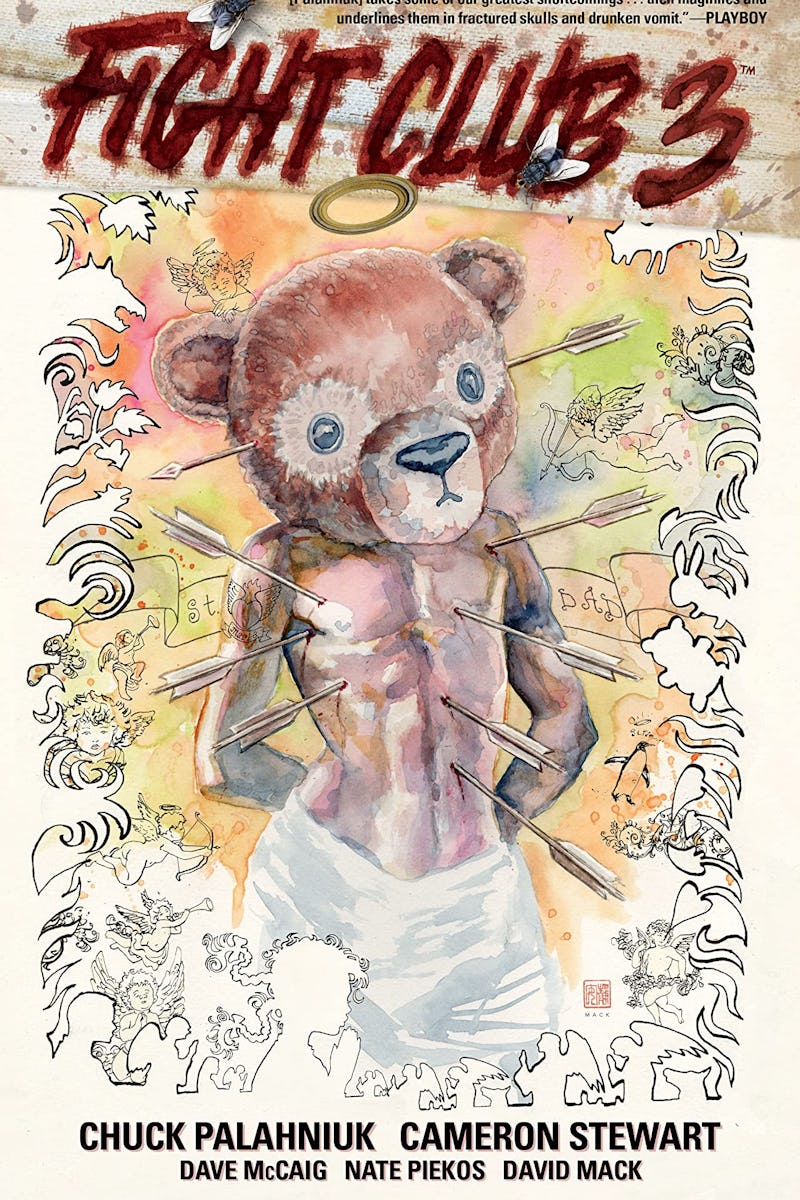
“Fight Club 3 has got the whole backstory for Marla finally. Marla is gonna be more than just the girl character. She has got a better backstory than anyone in the book.”
'Fight Club 3' is setting up a Chuck Palahniuk cinematic universe. Here's how.
Palahniuk joins Inverse Happy Hour to talk about his new graphic novel and what he has planned for the future — including the 'Damned' trilogy.
by Chelsea SzmaniaChuck Palahniuk is a novelist best known for his award-winning 1996 book, Fight Club. Fast-forward 24 years, and he's written numerous short stories and well over a dozen works of fiction. He joins Inverse Happy Hour to discuss the second installment to his 12-issue graphic novel miniseries, Fight Club 3, but this time, much of the focus is on the resolute Marla Singer.
“Fight Club 3 has got the whole backstory for Marla finally," he says. "Marla is gonna be more than just the girl character. She has got a better backstory than anyone in the book."
During the Q&A, Palahniuk revealed how he finds the unique voice in his writing, why he thinks we aren't close to a Project Mayhem-style societal collapse (despite what the world's current situation seems to suggest), and some quarantine recommendations for “down-and-out short story collections that offer a lot of comfort in that the characters are really struggling through something themselves.”
He also teases a big moment at the end of Fight Club 3 that will segue into a shared universe for his various literary creations and revealed that a conclusion to the Damned trilogy is in the works too.
And if you're interested in picking up a copy of Fight Club 3's latest issue, be sure to contact your local independent bookstore (support local businesses!) to find out how to get your hands on a personalized copy from Palahniuk himself.
Below are some highlights from Inverse Happy Hour, and be sure to watch the video below for a special reading from his short story Facts of Life following the interview.
On what it is about graphic novels that make them perfect for storytelling — “One of the best things about graphic novels is the still image. You can really examine the still image. In film, you can only put so many elements in a shot, and that shot is only gonna be on the screen for a number of seconds. So people are gonna pick up a couple faces, maybe a prop, and that is it.”
“But still images in comics — big splash pages — can be examined at your leisure. So that’s one of the things in comics, is that you can put in such a level of detail that you can never use in film, and if you put that detail into prose, it would be fantastically boring and static. So just that level of fantastic splash page detail and the really intense plotting of comics, because every time you turn that page, there’s gonna be a setup and a payoff. So for 25 pages of comics, you’ve got a dozen really great setups and payoffs. And that’s better pacing than almost any film and definitely better pacing than most novels.”
“Every book has to have a device like the rules of Fight Club.”
On the difference between writing a graphic novel and writing a book — “Writing a graphic novel has a built-in progression, built-in transition between one moment and the next, and that is the panel. It’s always panel, panel, panel, page turn, and the panels carry you forward. So in writing a book, you always have to come up with a completely different form of moving time, of implying the passage of time and transitioning from one topic or one setting or one time period to another.
So for me, every book, you know, has to have a device like the rules of Fight Club. The rules of Fight Club were just a transitional device to jump around temporally within one short story and cut story like you would cut film or like you would cut comics. It’s much more difficult to do that kind of jumping around in prose. In comics, it’s easy because of the panels.
—
A huge thanks to Palahniuk for joining us!